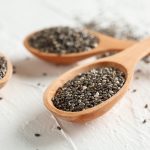Everyone has heard the universal saying, ‘an apple a day keeps the doctor away’. Maybe it’s now time for us to start being more appreciative towards other fruits as well. It’s no secret that fruits are some of the best sources of vitamins, minerals, fibre and nutrients for your body. Fruits contain carbohydrates which make it important for them to be counted as part of your meal plan. For example, eating a fresh fruit or a fruit salad as a snack or dessert is a simple way to give your body some extra nutrition!
The commonly known benefits of eating fruit include:
1.Lowering of blood pressure
2.Reduced risk of heart disease/stroke
3.Lower risk of eye problems
4.Reduced risk of obesity and diabetes
5.Healthy digestive system
6.Optimum blood sugar levels
7.Decrease in bone loss
8.Protection against certain types of cancer
Juicing Fruits
Some people prefer fruit juice to whole fruit. You may have also heard that fruit juice allows your body to absorb nutrients better than whole fruit. However, there is NO scientific evidence to suggest that extracted fruit juice is healthier or has more benefits than eating whole fruit.
On the contrary, whole fruits contain healthy fibre, most of which is lost while juicing the fruit. This deprives your body of the various benefits of fibre such as:
1. Prevention/ relief from constipation
2. Promoting gut health
3. Maintaining a healthy weight
4. Lowered risk of diabetes, heart disease and some types of cancer
5. Reduced risk of chronic illnesses
6. Help in reaching early satiety (makes you feel full)
You may consider juicing if you do not enjoy eating fruit. This can be a helpful method to add fruits to your diet, which you otherwise may not eat. However, try to blend your fruit instead of juicing them. This ensures that your drink contains all the edible parts of the fruit along with all the healthy nutrients and fibers.
Tip: Blend/ juice only as much as you can consume at a time. Harmful bacteria can grow very quickly in freshly blended fruit.
Diabetes and Fruits
It is a common myth that diabetic patients should steer clear of certain fruits because they are “too sweet” or contain sugars. While it is true that some fruits tend to be sweeter than others, that does not mean you can’t eat them if you’re a diabetic.
Your blood sugar levels are determined by the total amount of carbohydrate you consume. It does not take the source of the carbohydrate (which food it came from/starch or sugar) into consideration.
Most fruits have a low-medium glycaemic index. This means that they do not lead to a sharp rise in blood glucose levels, like other carbohydrate rich foods such as white bread which has a high glycaemic index.
To assess the effect of fruit on your blood glucose level, it is especially important to consider portion sizes. An average serving of fruit should contain around 15 grams of carbohydrate(similar to a slice of bread). An ideal serving size would thus depend on the carbohydrate content of the fruit. It does not matter whether you eat a fruit with high or low carb content. As long as the serving contains 15 grams of carbohydrates, the effect on your blood sugar levels remains the same.
You can consider opting for the following fruit servings which contain 15 grams of carbohydrates:
1. 1 ¼ cup of strawberries
2. ½ of a medium sized apple
3. ½ of a medium sized banana
4. 1 cup raspberries
5. 1 cup blueberries
6. 1 cup cubed muskmelon
7. 1 cup blackberries
All fruits contain nutrients, vitamins, and minerals that may help prevent heart disease, cancer and other illnesses. Most fruits are naturally low in fat, sodium, and calories. None have cholesterol. Some examples of the common nutrients found in fruits are Vitamin C, Vitamin A, dietary fibre, potassium, and folate. Examples of fruits rich in some specific nutrients are:
– Vitamin A: muskmelons, tomatoes, mangoes
– Vitamin C: oranges, strawberries, tomatoes, kiwis
– Potassium: bananas, raisins, muskmelons
– Fibre: apples, strawberries, raspberries
The most effective way to include all the various nutrients into your diet is by eating different coloured fruits. There are 5 main colour groups for fruits and vegetables. Some examples of fruits from the various colour groups have been given below:
– Red & Pink: cherries, cranberries, pink grapefruit (called “chakotra” in India), pomegranates, red apples, red grapes, strawberries, tomatoes, watermelons, etc.
– Blue & Purple: blackberries, blueberries, black currants, dates, grapes, plums, prunes, purple figs, raisins, etc.
– Yellow & Orange: apricots, muskmelons, mangoes, oranges, papaya, peaches, pineapples, pumpkins, tangerines, etc.
– White: banana
– Green: avocados, green grapes, pears, kiwis etc.
Eat from as many color groups as you can every day! Remember to spread out your fruit intake throughout the day so you do not end up eating a lot of carbohydrates in a single sitting.






